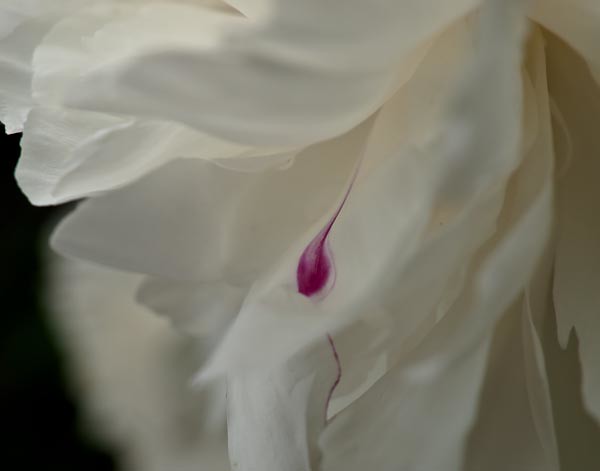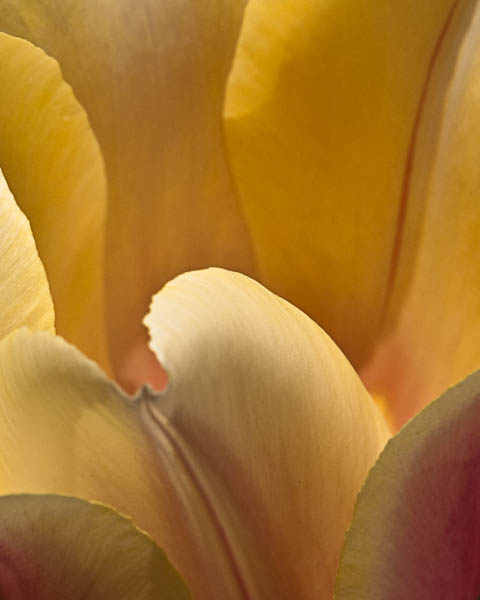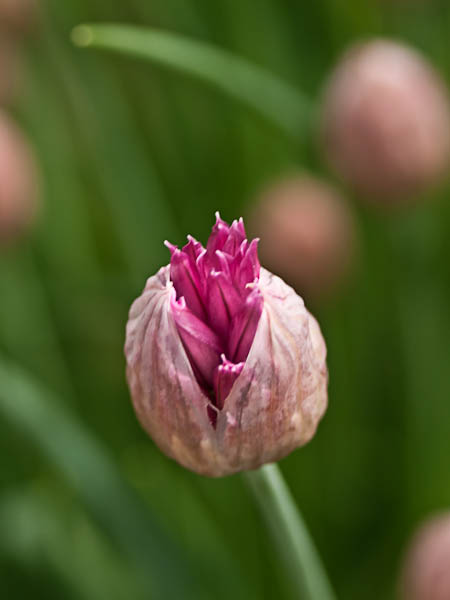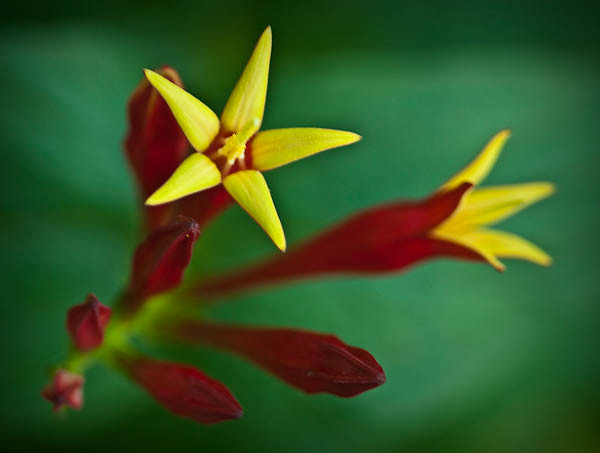Our peony season in Madison has been over for a week, the victim of torrential downpours which soaked the flowers and sent them drooping onto the garden’s earth. So when we took a visit to Racine for a Frank Lloyd Wright Tour this weekend, I was happy to see peonies in full bloom. Lake effect. We were only a mile inland from Lake Michigan and spring was later in coming. The peonies were at their peak.
As we headed up a driveway to one of the homes on the tour, I noticed this peony plant. Each flower was pure white save for a tear-shaped streak of deep pink and a single petal with pink edging. I hadn’t planned on doing any macro photography – not on an architectural tour – but luckily my lenses were in the car. Sherpa was hurrying me more than usual, as the skies were graying and raindrops were splashing around us. But I just couldn’t pass up the opportunity to capture this white peony with the unusual pink markings. So we went back to the car for the right equipment and I studied the peonies.
Fifty shots later, and we were back on the tour. But I’m glad I stopped to smell the roses…wait, wrong saying.
Glad I stopped to photograph the peony.











